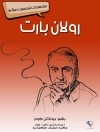Aesthetic Materialism: Electricity and American Romanticism focuses on American romantic writers’ attempts to theorize aesthetic experience through the language of electricity. In response to scientific and technological developments, most notably the telegraph, eighteenth- and nineteenth-century electrical imagery reflected the mysterious workings of the physical mind as well as the uncertain, sometimes shocking connections between individuals. Writers such as Whitman, Melville, and Douglass drew on images of electricity and telegraphy to describe literature both as the product of specific economic and social conditions and as a means of transcending the individual determined by such conditions. Aesthetic Materialism moves between historical and cultural analysis and close textual reading, challenging readers to see American literature as at once formal and historical and as a product of both aesthetic and material experience.
Circa l’autore
Paul Gilmore, Associate Professor of English at California State University, Long Beach, is also the author of
The Genuine Article: Race, Mass Culture, and American Literary Manhood (2001).












